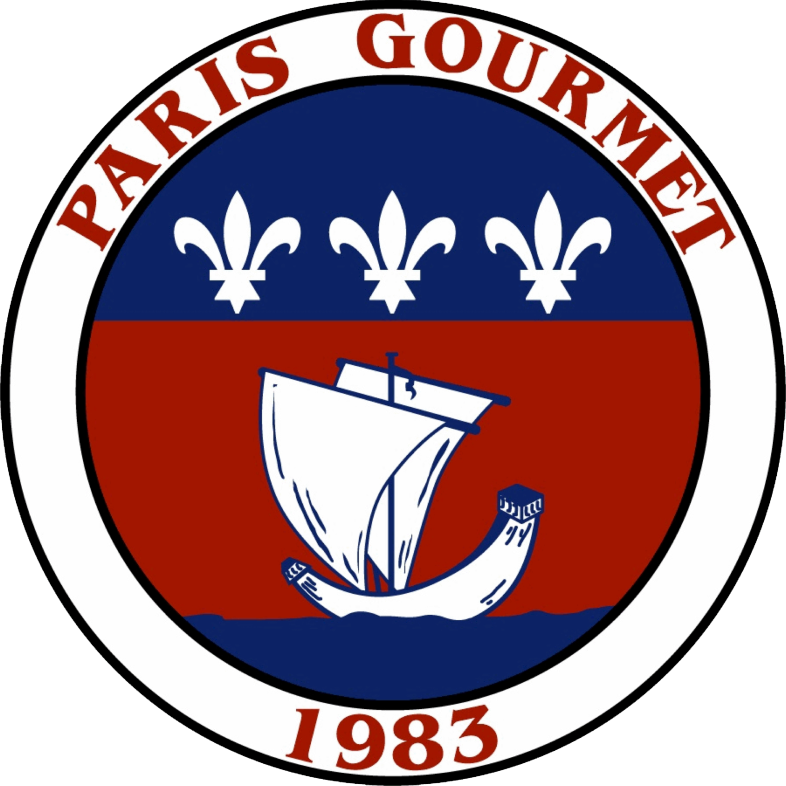Iconic Desserts - Vacherin
- By Charlotte Brown
- January 15, 2025
WHAT ARE WE REFERRING TO? DELICIOUS CHEESE FROM THE JURA PLATEAUS OR EQUALLY EXQUISITE FROZEN DESSERTS? THE LATTER, OF COURSE. A TRUE “CLASSIC” WHICH, LIKE THE BAKED ALASKA, PROFITEROLES AND ICED YULE LOGS, IS ONE OF THOSE FESTIVE DESSERTS WHOSE ORIGINALITY LIES IN THE HARMONIOUS PAIRING OF THE ART OF THE PASTRY CHEF AND THAT OF THE ICE CREAM MAKER.
Texte by Eric Birlouez - photographs by Xavier Ferrand (Featured in the January 2025 issue of Pastry1 Magazine)
Iconic Desserts
An essential for any window display
 Nevertheless, the name of this sweet delicacy was chosen in reference to the shape and color of the eponymous cheese - Vacherin-Mont d'Or - whose paternity is disputed between the Swiss and the Franc-Comtois. Made only in winter using cow's milk (vacherin was the cheese of... cowherds), this soft speciality with a creamy texture, off-white in color and cylindrical in shape, can be eaten with a spoon, straight from its round wooden case!
Nevertheless, the name of this sweet delicacy was chosen in reference to the shape and color of the eponymous cheese - Vacherin-Mont d'Or - whose paternity is disputed between the Swiss and the Franc-Comtois. Made only in winter using cow's milk (vacherin was the cheese of... cowherds), this soft speciality with a creamy texture, off-white in color and cylindrical in shape, can be eaten with a spoon, straight from its round wooden case!
In its traditional version, the dessert known as vacherin consists of an envelope of French meringue surrounding vanilla ice cream and/or sorbet (sometimes with confit fruit) and decorated with chantilly. It can be accompanied by a raspberry, strawberry or chocolate coulis.
Originally, this was an unglazed cake, probably originating in Switzerland, and made of a sablé dough base on which almond paste crowns were mounted. In 1873, in his book Le Livre de Pâtisserie, Jules Gouffé - a former pupil of Antonin Carême and ex-cook to Napoléon III - described "the vacherin as it is made in Switzerland [...]: it is always a base and a ring of almond paste.” He points out that the French prefer to replace almond paste with meringues (Marie- Antoinette, it seems, liked to make vacherins at her Trianon estate by spooning the meringue, as the piping bag with a nozzle had not yet been invented). Gouffé also indicates that the vacherin's cream can be flavored with vanilla or chocolate ("we add chocolate to the vanilla, which we loosen with syrup to mix it with the Chantilly and decorate the vacherin with white Chantilly"), as well as coffee, strawberries or raspberries. The famous chef also points out that "the quality of the vacherin depends on the cream.”
Originally an unglazed cake born in Switzerland
The iced version of the vacherin is said to have been perfected in Lyon at the end of the 19th century (according to La Grande Histoire de la pâtisserie-confiserie française). Its invention is sometimes attributed to chef Gustave Garlin, who came up with this iced variation in 1887. The recipe appears in Le cuisinier moderne, one of Garlin's many culinary works. However, there's nothing to suggest that he's the inventor of the ice cream cake... In Austria, there's a cake that's similar to the vacherin: the Spanish Windtorte, which curiously translates as "Spanish wind" (the word "wind" was used in the 17th century to designate meringue). This dessert takes the form of a meringue shell filled entirely with whipped cream, ice cream and red berries, and is covered with a decorated meringue disc. Around the cake are candied violets.
 Today, top chefs are turning their attention to vacherin and revisiting it with new ingredients
Today, top chefs are turning their attention to vacherin and revisiting it with new ingredients
Today, a number of patissiers and ice- cream makers are revamping the classic iced vacherin by revisiting (often in a lighter, less sweet version) the trio of ice cream, meringue and whipped cream that made this dessert such a success. Top chefs are taking an interest in it, contributing to its resurgence on our plates. They integrate new ingredients (fruit marmalade or confits, raw cream, fontainebleau, almond cream, coconut milk foam...), playing with colors and shapes ("deconstructed", spherical, etc.), creating new combinations of textures (almond sponge cake and creamy mousse), flavors (strawberry-yuzu, chestnut-matcha or rhubarb- wild strawberry coulis or sorbets) and tastes (jasmine gel for a floral note, balsamic vinegar caramel for a touch of acidity).
There’s no vacherin without meringue
The ability of egg whites to form "snow" when beaten vigorously appears to have been used in pastry-making only from the Renaissance onwards. In the following century (the 17th), François de la Varenne's provided a recipe for "snow eggs" and "snow sugar cookies" for Le cuisinier François, which corresponds more or less to the recipe for Italian meringue.
The etymology of the word meringue remains a mystery. Some interpret this as a reference to the Swiss town of Meiringen, where a pastry chef named Gasparini is said to have lived. In 1720, he served a meringue to Marie Leszczynska, the future wife of Louis XV. Another, even more fanciful theory, , has meringue deriving from the Polish word marzynka meaning "black", which could have been used to designate a chocolate meringue!
 The etymology of the word meringue remains a mystery
The etymology of the word meringue remains a mystery
In addition to the vacherin, meringue is used in many pastries that have either fallen out of use or become fashionable: the baked Alaska, the lemon meringue tart (and other meringue fruit cakes), the merveilleux, the pavlova, the mont-blanc, the meringue yule log, chocolate coated marshmallows... and also the progrès, the succès, the chambord, the pompadour, the kiss, the patricien...
